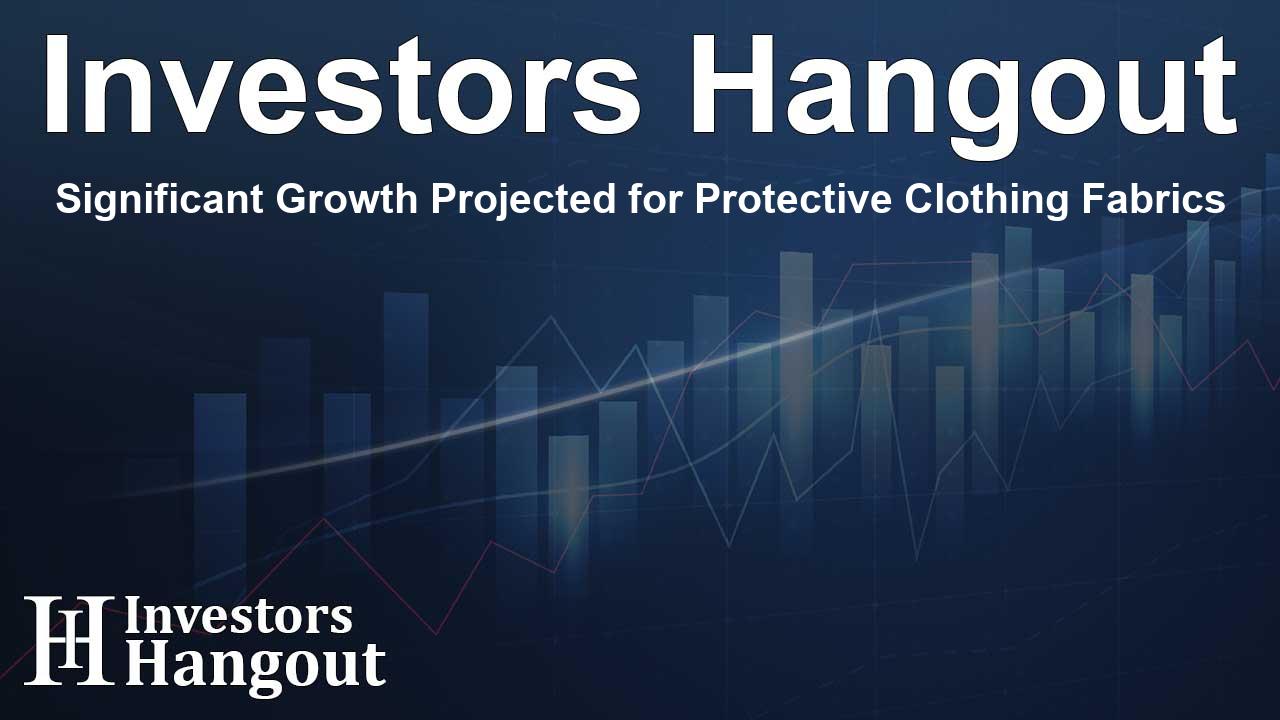Significant Growth Projected for Protective Clothing Fabrics

Growth Potential of the Industrial Protective Clothing Fabrics Market
The Industrial Protective Clothing Fabrics Market is expected to witness significant growth, projected at a compound annual growth rate (CAGR) of 8.1%, from an initial valuation of US$ 11,357.3 million in 2024 to approximately US$ 24,747.6 million by 2034. This period is characterized by an increasing emphasis on workplace safety, stringent legislation, and heightened awareness regarding occupational hazards.
Key Drivers of Market Evolution
The remarkable growth in this market can be attributed to various factors. One predominant catalyst is an uptick in regulations concerning workplace safety, along with the rising consciousness around occupational risks. Industries such as manufacturing, construction, and oil & gas heavily rely on flame-resistant and chemical-resistant fabrics to protect workers exposed to extreme hazards. This growing demand for protective clothing is likely to remain robust in both the short and medium term.
Emergent Industries Contributing to Growth
The burgeoning renewable energy sector and the evolution of advanced manufacturing processes will also substantially contribute to market expansion. Sustainability has become a focal point for manufacturers, with an increasing number developing eco-friendly products that not only meet safety requirements but also address environmental concerns. Innovations such as smart textiles and wearable industrial goods are gaining traction, aiming to improve safety and functionality in high-risk environments.
Recent Innovations and Developments
Key industry players are actively engaging in developing new solutions that balance safety and environmental sustainability. Recent innovations, including flame-resistant and antistatic coveralls, seek to lower carbon footprints and reduce water consumption. The materials dominating the market are Aramid & blends, recognized for their superior heat and flame resistance compared to alternatives like polyolefin, PBI, and cotton fibers.
Regional Insights into Market Dynamics
The industrial protective clothing fabrics market is gaining momentum worldwide, especially in regions such as East Asia, expected to exhibit the fastest growth with a CAGR of 9.0%. China's market will grow rapidly due to industrialization and enhanced regulatory pressures alongside advancements in protective fabric technologies. Meanwhile, the U.S. market demonstrates healthy demand, supported by enforced safety regulations and greater awareness of occupational health standards.
Competitive Landscape in the Industry
Key players driving innovation in this industry include notable companies such as 3M, Ansell Limited, Carrington Textiles, and DuPont, among others. These industry leaders aim to meet growing demands for high-performance protective clothing tailored to hazardous environments. Continuous investments are directing their efforts toward developing sustainable solutions, paving the way for future growth.
Market Strategies for Sustainable Growth
The ongoing transition toward sustainable materials, including bio-based chemicals and recycled fibers, reflects the industry's commitment to minimizing environmental impact. Eco-friendly practices are increasingly capturing the attention of consumers and stakeholders alike, with considerable regulatory demands guiding manufacturers' strategies. For instance, a recent product launch by DuPont introduces Nomex Comfort with EcoForce, a new flame-resistant fabric designed for oil and gas sectors, which emphasizes both safety and sustainability.
Innovations in Product Offerings
The industry continues to adapt and evolve through the introduction of innovative products. A noteworthy announcement from Toray Industries includes the launch of LIVMOATM 4500AS, a disposable protective garment compliant with the JIS T 8115 Type 4 standard, which targets sales of 500,000 pieces by 2025. Similarly, Hazchem Safety's introduction of the ORKA ECO coverall showcases a commitment to reducing water use and carbon footprints while maintaining safety standards.
Insights from Market Trends
The industrial protective clothing fabrics market has undergone significant change and adaptation, with historical data from 2019 to 2023 showcasing a growth rate of 5.4%. The outlook for the coming decade highlights a range of materials and applications based on industry needs, emphasizing the importance of safety in diverse sectors from automotive to electronics.
Frequently Asked Questions
What is the projected growth rate of the Industrial Protective Clothing Fabrics Market?
The market is anticipated to grow at a CAGR of 8.1% from 2024 to 2034.
Which region is expected to experience the fastest growth?
East Asia is projected to exhibit the fastest growth rate of 9.0%.
What are the key materials dominating this market?
Aramid & blends account for approximately 42.8% of the share in the material type segment.
How significant is the oil and gas industry to the market?
In 2024, the oil & gas industry is expected to hold around 29.1% of the market share.
What role does sustainability play in market growth?
Sustainability is increasingly influencing the market as manufacturers adopt eco-friendly practices and materials to meet regulatory standards and consumer demand.
About Investors Hangout
Investors Hangout is a leading online stock forum for financial discussion and learning, offering a wide range of free tools and resources. It draws in traders of all levels, who exchange market knowledge, investigate trading tactics, and keep an eye on industry developments in real time. Featuring financial articles, stock message boards, quotes, charts, company profiles, and live news updates. Through cooperative learning and a wealth of informational resources, it helps users from novices creating their first portfolios to experts honing their techniques. Join Investors Hangout today: https://investorshangout.com/
Disclaimer: The content of this article is solely for general informational purposes only; it does not represent legal, financial, or investment advice. Investors Hangout does not offer financial advice; the author is not a licensed financial advisor. Consult a qualified advisor before making any financial or investment decisions based on this article. The author's interpretation of publicly available data shapes the opinions presented here; as a result, they should not be taken as advice to purchase, sell, or hold any securities mentioned or any other investments. The author does not guarantee the accuracy, completeness, or timeliness of any material, providing it "as is." Information and market conditions may change; past performance is not indicative of future outcomes. If any of the material offered here is inaccurate, please contact us for corrections.